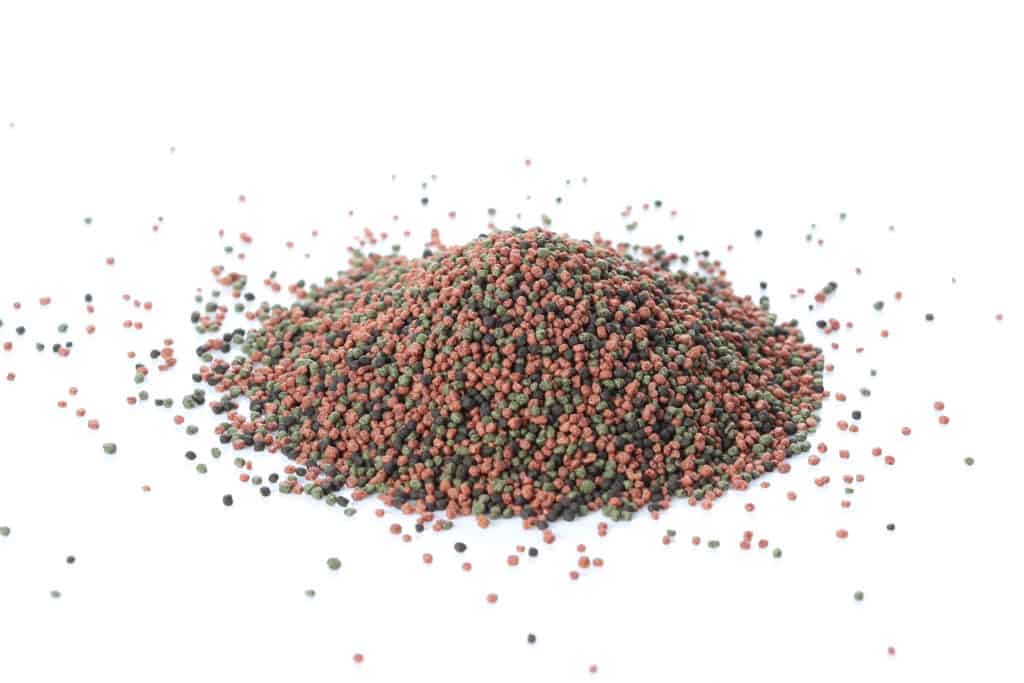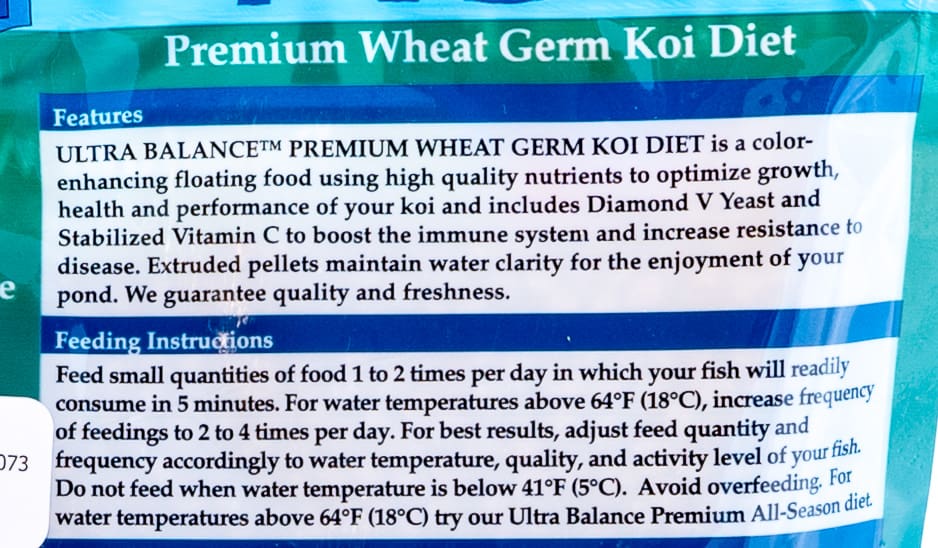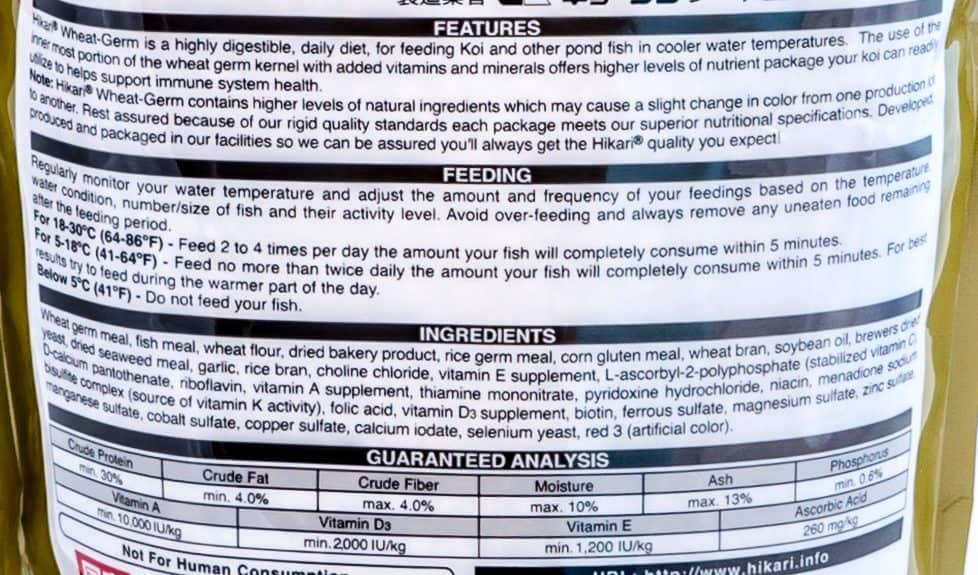**This post contains affiliate links that gives us a small percentage of your purchase for our recommendations.**
When it comes to selecting the best fish food for your fish, the selection can be daunting. If you own any pets, I guarantee you have fallen victim to pet food marketing. It happens to all of us, even veterinarians, causing us to question the education we received on just this topic. “Grain free,” “gluten free,” “all natural,” “organic” and other buzzwords are dropped at lightning speed to confuse the consumer into purchasing based on just how many of these words can fit on a package. And fish diets are no exception. Sure, they may not get the press of the cat and dog food, but a lot of little containers can fit into a very small shelf, causing fish owners eyes to glaze over just taking in the sheer magnitude of choices. Many owners will be drawn to either the flashiest packaging or cheapest price. It’s just a fish, right? Well, just like the food you eat yourself and feed to your fluffy pets, fish rely on good nutrition in order to stay healthy. By purchasing a quality fish product, you can improve your fishes’ lives significantly.
So how do I choose the best fish food?
The best consumer is an informed consumer. We have a great webinar that is recommended by many of the top fish food companies. It breaks down how to read the labels on the back of fish food containers. There are considerably less items to peruse than your regular box of supermarket crackers.
Don’t have time to watch? Let’s break it down to the simplest parts.
Pellets vs. Flakes
This rule is easy to follow. If a pellet fits into your fish’s mouth, go with the pellet. This is due to surface to mass ratio and water soluble vitamins. Consider how much contact a flake has with the air and water in comparison to a pellet. A big, wide flat flake will lose more of its water soluble vitamins, including vitamin C, faster than a concentrated pellet. No matter how long the container has been open, pellets win.
The 6 Month Rule
I don’t care what is printed on your container; after you break the bag or jar open, you have 6 months to feed that food, then toss it. At the end of those 6 months, the water soluble vitamins, again, are so reduced, you might as well be feeding your fish cardboard. Those dates are printed on the outside in the event the store doesn’t sell the food by then.
“Crude”
This is listed on the ingredient list as “crude protein,” “crude fat” and “crude fiber.” This does not refer to petrol and is instead the method of testing.
Protein
All animals need protein to survive. Fish can be herbivores, omnivores or carnivores. Herbivores and omnivores need between 35-45% protein in their food. Carnivores require 40-55%. The protein source must contain all essential amino acids for the fish to live. The best source of these for fish is animal protein, specifically fish meal. Fish meal is any leftover fish scraps from processing fish into other products, mostly for human and cat consumption. Fish meal is perfectly safe and healthy. The best plant source is soy, but this can only make up 50% of the total protein. Soy does not contain all the essential amino acids fish need to survive.
Fat
Fats are used for energy, insulation and hormone production. In most fish, fats should be 15-25% of the total diet. Just like humans taking fish oil supplements, fish also require N-3 fatty acids that they cannot fabricate themselves. Vegetable oils have very few N-3 fatty acids. Fish can become obese with overfeeding, so try not to feed your fish your love!
Carbohydrates
The primary energy source in food is poorly digested in fish. High levels of carbohydrate rich treats can actually cause liver malfunction. Omnivores should only have 25-40% of their diet from carbohydrates, whereas carnivores require <20%.
Vitamins
Fish require most of their water and fat soluble vitamins from their diet. This includes vitamins A, C, D, E & K. Vitamin A deficiencies can lead to skeletal deformities, and lack of vitamins C & E decrease immune function. As we mentioned previously, these vitamins are the first nutritional component to leech out of food pellets and flakes.
Minerals (ASH)
No, ash does not mean that charcoal particles are mixed in as filler. Ash measures the mineral content of the diet. Most fish get their minerals from the surrounding water, so there is very little need for supplementation in the diet. Phosphorus is one of the main requirements from food, but only 0.3%.
Spotting Quality Food
Consider the various protein sources in a bag of fish food. If there are additional protein supplements listed, or multiple protein sources, this indicates a poor protein source and therefore, poor quality diet. Know the scientific names of all the vitamins and make sure your food contains all the essentials. A “vitamin mix” is perfectly acceptable.
Color Enhancing Food
Some koi diets contain color enhancers to bring out the red pigments in the skin. This is done through the addition of carotenoids, including synthetic materials, yeasts, bacteria, fungi, krill/shrimp and algae. These foods should be few very sparingly and only a short period of time.
Our Selections for Best Fish Foods
Best Goldfish Food: OmegaOne Sinking Goldfish Pellets
We like this food because it contains quality ingredients, comes in a variety of sizes, has a good protein level and sinks to keep fancy goldfish neutrally buoyant.
Best Koi Food: Ultra Balance Maintenance Diet
Quality ingredients with economy pricing is the best for any koi. They also have a Growth diet if you’re looking to get your koi into the show ring.
Best Tropical Fish Food: Hikari Micro Pellets
Why would you feed your tropicals silly flakes when these sweet micro pellets exist? At 43% protein, these are a great choice for most tropical fish.
Best Betta Fish Food: Hikari Betta Bio-Gold
This one was rough. To be honest, I haven’t looked much at betta foods until now. Why on earth does one contain molasses? And some of them have way too much fat! Bettas are one of the fish kingdom’s laziest fish and definitely do not need the extra calories. Using the criteria above, this is the best recommendation we can make, but since it’s in a stupid cardboard container, it will lose nutrition much faster than the screw-top plastic containers.
How much to feed my fish?
You’ve heard of our 5-minute rule, yes? You can apply it to all fish, not just koi. Always consider the size of the stomach in a fish. Provided you are not reading this zoomed in, the stomach on your betta fish is only this big –> o It’ll only take 4-5 of the tiny pellets and 1-2 of the larger pellets to fill that stomach. Bettas are repeat offenders for eating too much and not being able to pass large balls of poop. We are happy to recommend different feeding strategies based on your system.




Pingback: The Nitrogen Cycle – Aquatic Veterinary Services
Pingback: Preventing Disease in Fish Tanks and Ponds – Aquatic Veterinary Services
Pingback: Fish Rescue Guide – Aquatic Veterinary Services
Pingback: Fish Stunting - Aquatic Veterinary Services
Hi, I was wondering about the nutrition of foods like live brine shrimp? I have dwarf puffers I’m feeding them live snails (ramshorn) and live brine shrimp. They most readily eat the brine shrimp, but happily go after the snails after a little time (and because they’re live them fouling up the water while uneaten isn’t a problem) however they aren’t interested in any of the pellets I’ve tried them on and I’m a little worried that this means they won’t be getting a complete diet.
The snails are raised on fresh veggies (spinach, cucumber, sweet potato) as well as stray pellets/waste from guppies and keeping the tank they’re in algae free which might affect their nutritional value. I am also planning on raising some brine shrimp up a little bigger than fresh hatched nymphs using pureed vegetables and fish foods to give them more nutrition for the puffers, too.
Here is everything you need about the nutritional information of brine shrimp: https://digitalcommons.uri.edu/srhonorsprog/83/
Pingback: Your Best Guide To Fish Food Nutrition and Vitamins 101 - Paws Wings And Fins
Pingback: How Do I Make My Discus Grow Faster? (Know 8 Best Methods)